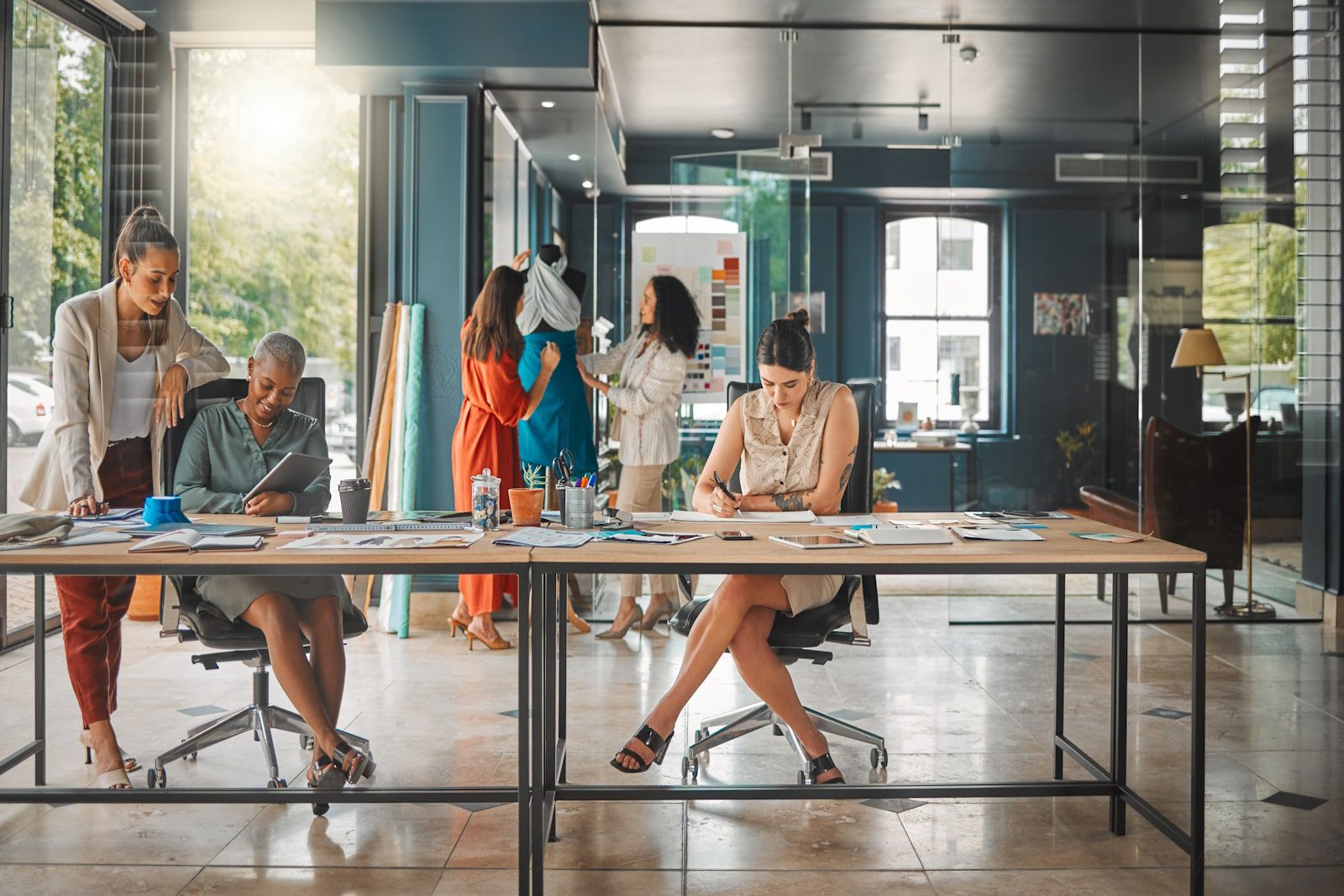
Trends in Commercial Interior Companies: What’s Out, What’s In
As the nature of work evolves, so too must the environments in which we work. Commercial office interiors are undergoing a profound transformation, shaped by hybrid work patterns, employee wellness priorities, and a heightened focus on sustainability. Interior companies at the forefront of this evolution are responding not with superficial aesthetic changes, but with deep, functional redesigns that support new ways of working and living.
At Turnkey Interiors, we’ve observed a sharp departure from one-size-fits-all layouts and dated design practices. Today’s best workplaces are intentional, adaptable, and built for connection. Here’s a comprehensive look at what’s falling out of favour—and what’s defining the future of office interiors.
Out: Fixed Cubicles | In: Flexible Work Zones
Fixed cubicle systems once offered a sense of order and privacy, but they now represent an outdated approach to office planning. In their place, flexible work zones are rising. These zones include reconfigurable furniture, acoustic pods, and mixed-use areas that accommodate everything from quiet focus to team collaboration. The modern workforce demands spaces that shift with their needs—and leading interior companies are delivering precisely that.
Out: Grey, Sterile Palettes | In: Warm, Natural Tones
Gone are the days of cold, monochrome office environments. Today’s offices are embracing warm, nature-inspired tones, layered with organic textures like timber, wool, rattan, and terracotta. These palettes aren’t simply more appealing; they foster a sense of calm and belonging, especially crucial in high-stress environments. Biophilic principles are informing many of these changes, with interior companies using colour and material to support mental well-being.
Out: Traditional Desking | In: Hot-Desking and Shared Tables
With hybrid and remote work now the norm, dedicated desks for every employee are becoming redundant. Interior companies are replacing traditional desking setups with hot-desking options and large communal tables. These arrangements promote flexibility, save space, and encourage cross-team collaboration. Some firms are balancing hot-desking with personalised lockers and booking systems to provide structure and comfort.
Out: Fluorescent Lighting | In: Layered, Human-Centric Lighting
Fluorescent lighting has long been associated with fatigue and discomfort. The shift towards layered, human-centric lighting focuses on supporting natural circadian rhythms and improving overall user experience. Interior companies are integrating tunable LEDs, ambient task lighting, and natural daylighting strategies to create energising environments that also reduce eye strain and support mental health.
Out: One-Size-Fits-All Design | In: Customised, Purpose-Driven Layouts
Generic office designs are no longer sufficient. Instead, companies are demanding bespoke environments that reflect their brand identity, culture, and workflows. Interior companies are responding with spatial layouts that align with unique organisational needs—whether that’s open collaboration zones for creative industries or quiet pods for finance and legal teams. Customisation is now central to creating a productive and engaging office.
Out: Minimal Interaction Areas | In: Collaboration-Focused Spaces
Where interaction used to be limited to boardrooms and watercooler chats, interior companies are now designing intentional collaboration areas throughout the office. Breakout lounges, brainstorming corners, huddle zones and writable surfaces are all becoming standard features. These zones foster innovation, support casual conversation, and encourage spontaneous idea exchange—key drivers of organisational agility.
Out: Excessive Partitioning | In: Transparency and Glass Walls
Opaque walls and heavy partitions are being replaced with transparency in mind. Glass walls allow light to pass through, improving visibility and promoting a sense of openness. Interior companies are integrating these elements to facilitate visual connection while still managing acoustics and privacy through smart glazing or curtains. It’s a shift towards openness—both literally and culturally.
Out: Synthetic Surfaces | In: Sustainable, Recycled, and Natural Materials
Interior companies are increasingly held accountable for the sustainability of their materials. As a result, there is growing demand for recycled, recyclable, and responsibly sourced finishes. Surfaces made from cork, reclaimed timber, bamboo, and recycled textiles are not only environmentally responsible but also introduce a tactile warmth to interiors. Sustainable certification—whether through BREEAM, LEED, or Green Star—is becoming a standard expectation.
The Bigger Picture: A Workplace Designed for People
This overarching design shift reflects a growing awareness that the office must be more than just a place to work—it must support people’s physical and emotional health, enable flexibility, and reflect evolving company values. Interior companies are embracing a people-first approach, informed by environmental psychology, occupational health standards, and post-pandemic learnings.
More than aesthetic updates, these changes mark a philosophical turn in how we design for productivity, engagement, and resilience. As we look ahead, we expect to see more integration of technology, data-informed spatial planning, and ongoing adaptation.
How Turnkey Interiors Can Help
As one of the leading interior companies in South Africa, we at Turnkey Interiors specialise in designing purposeful, future-ready office environments. Whether you’re seeking to overhaul a legacy space or incorporate subtle innovations into your current layout, our team can tailor solutions to your specific needs and goals.
If you’re ready to explore what’s next for your office interior, contact us today. Let’s design a space where your people and your business can thrive.



Leave a Reply